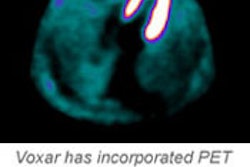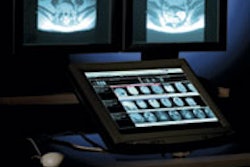CHICAGO - While it’s well understood that integrating RIS and PACS networks can improve workflow, productivity, and patient care, quantifying those achievements can prove success as well as identify areas requiring additional process reengineering, according to researchers from the University of Montreal Hospital (CHUM).
"Although IT has direct impact on workflow, the overall impact of introduction of information technology such as RIS and PACS is also enhanced by workflow changes," said Dr. Luigi Lepanto of CHUM’s department of radiology. He spoke during a scientific session on Sunday at the 2003 RSNA meeting.
By installing an integrated RIS/PACS network, CHUM hoped to harmonize clerical and medical practices at its three hospital sites. CHUM also wanted to implement sharing of reading lists among the institutions.
After the RIS/PACS network came online, the CHUM study team analyzed the technology’s impact. At site #1, median delays between image production and reading of pulmonary radiographs, for example, declined from five days to three days, Lepanto said.
At site #2, delays dipped from three days to two days. Site #3 saw median delay for abdominal CT studies decline from 2.59 days to 2.01 days after RIS/PACS installation.
The various hospitals yielded different results due to variations in workflow that were little affected by the implementation of IT, Lepanto said. These workflow aspects relate to procedures or steps that haven’t yet been automated, or workload distribution among radiologists.
Decreased delays in reading time were seen in both high-volume (chest x-ray) and low-volume (e.g., CT) sectors. Impact of RIS/PACS was more marked in high-volume sectors and at less efficient sites, Lepanto said.
The transition period was more difficult, however, in high-volume sectors, Lepanto noted. Improvements were preceded by a period of erratic impact.
While the sites were filmless, they were not paperless, he said. The process of film management had been replaced by the need for order-form management.
This required clerical and medical workflow modifications, as well as workflow redistribution, Lepanto said. Ultimately, the best solution will be implementing an electronic record of the order form, either as an electronic order-entry system or scanning of the order form, he said.
The researchers also examined the impact of electronic signature modules. In abdominal ultrasound studies, median days between transcription and signature dropped from 11 days to three days.
The researchers queried users on whether electronic signature was a positive addition. Ninety-five percent said it was, with only 5% saying it was not. Asked whether electronic signature improved the radiologist workflow, 80% said yes, with 20% saying no.
"From a radiologist perspective, electronic signatures were well accepted with a recognized positive impact on service," he said.
In conclusion, the multisite deployment allowed for standardized practices as well as harmonization of productivity measures, Lepanto said.
By Erik L. Ridley
AuntMinnie.com staff writer
December 1, 2003
Workflow analysis can ease scheduling woes, November 28, 2003
Online scheduling improves satisfaction, July 3, 2003
RIS/PACS integration -- what is it and what are its benefits?, June 6, 2003
Web-based integration of PACS and RIS systems improves workflow, patient care, May 12, 2003
Computerized order entry yields benefits, February 7, 2003
Copyright © 2003 AuntMinnie.com




















